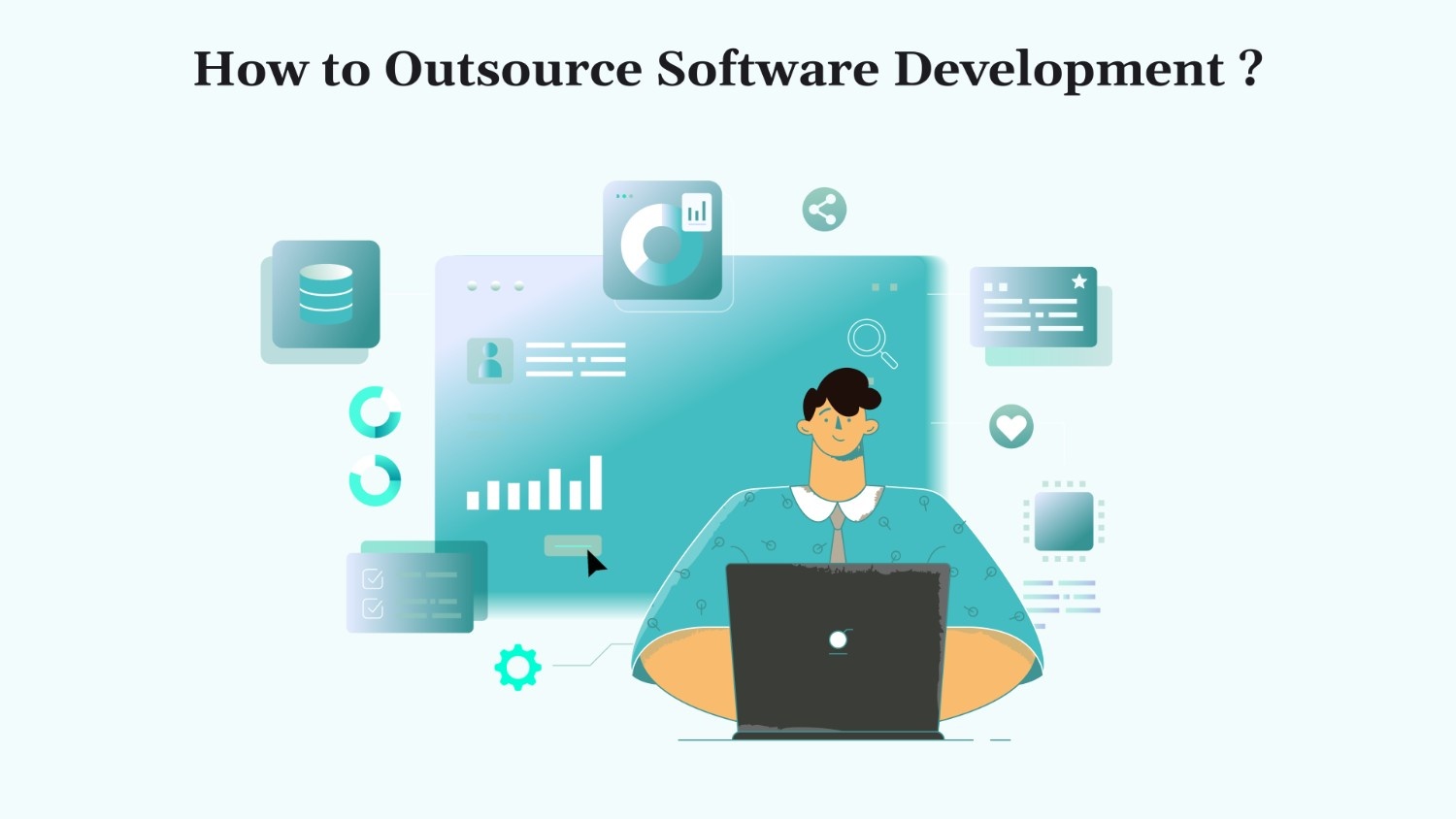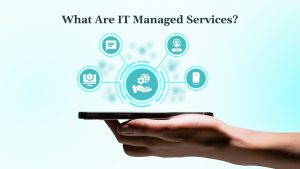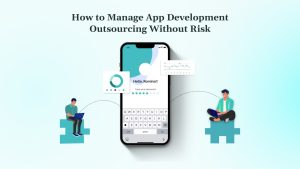In this comprehensive guide, we explore how outsourcing software development can help businesses, such as those in HealthTech, FinTech, and SaaS, optimize their development processes, overcome challenges, and drive innovation. A 2024 Deloitte survey found that 72% of companies now outsource IT functions, including software development, underscoring the mainstream nature of this practice.
We understand that navigating software development outsourcing can be challenging, particularly with tight budgets, strict regulations, and the constant pressure for rapid innovation. We are here to help you through these challenges, every step of the way.
Key Takeaways
Outsourcing software development in 2025 helps businesses scale, innovate, and stay competitive.
- What is it? Outsourcing involves delegating software development to external vendors, offering access to global talent, specialized skills, and cost savings.
- Benefits: Gain access to advanced technologies (AI, blockchain), scale quickly without hiring costs, and focus on core business functions.
- Who should outsource? Startups, SMBs, medium-sized enterprises, and non-tech companies (e.g., Healthcare, Finance, Media).
- When to outsource? For talent shortages, budget constraints, specialized expertise, scaling needs, and short-term projects.
- Choosing the right partner: Define clear goals, select a suitable outsourcing model (e.g., staff augmentation, end-to-end development), and ensure alignment on technical stack, security, and culture.
- Best practices: Maintain an agile process, use collaboration tools, and treat vendors as partners.
Ready to take your software development to the next level? Contact DEVtrust to discuss how they can help your business thrive.
What is Software Development Outsourcing?
Software development outsourcing involves delegating the design, development, and maintenance of software projects to external vendors or development teams. By leveraging global talent pools, businesses can access specialized skills and experience, reduce costs, and speed up time-to-market. Outsourcing partners with expertise in industries such as HealthTech, FinTech, and AI/ML enable businesses to develop high-quality software solutions that meet specific operational needs without the overhead of building large in-house teams. With its numerous advantages, the global IT outsourcing market is expanding rapidly, projected to increase from $617.69 billion in 2024 to $800 billion in 2029, driven by growing demand for specialized software development services.
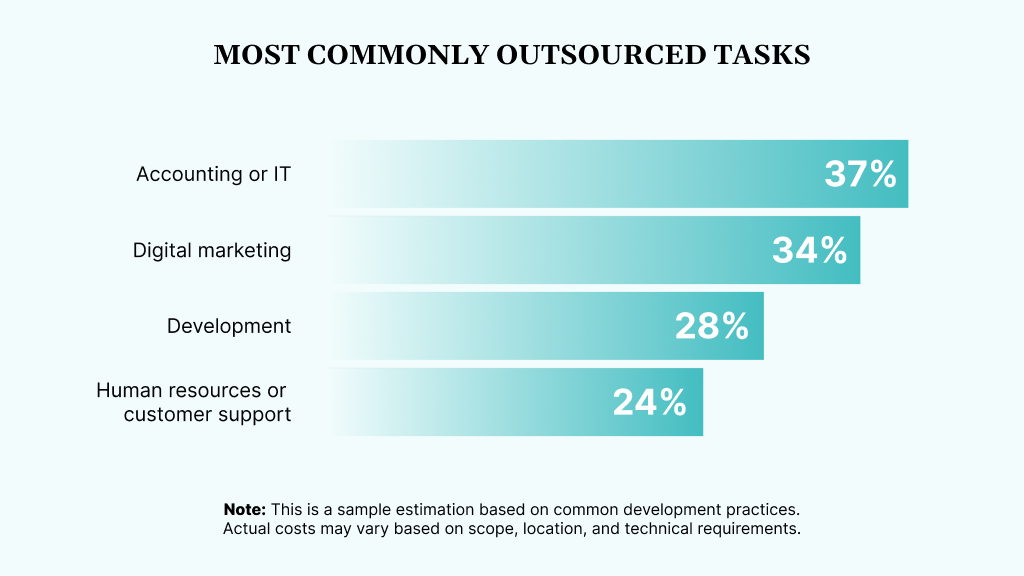
Benefits of Outsourcing Software Development
In 2025, outsourcing is about building agile, scalable software that drives digital transformation. With the ongoing evolution of technologies like AI/ML, businesses must innovate quickly and efficiently. Outsourcing allows companies to:
- Gain Access to Innovative Technologies and Expert Knowledge: Tap into a global pool of talent skilled in cutting-edge technologies like AI and blockchain, allowing you to access expertise that would be expensive or slow to develop within your team.
- Scale development efforts without the overhead of hiring and training in-house staff: Rapidly expand or contract development teams based on project needs, avoiding the fixed costs associated with full-time employees, such as salaries, benefits, and office space.
- Stay competitive by focusing internal resources on core business functions while outsourcing software development to experts: Reallocate internal talent to strategic initiatives, product innovation, and customer engagement, while external specialists handle the technical execution.
- Access to a broader talent pool: Outsourcing helps you tap into a global talent pool. This means you are not limited by who is available nearby; you can find the diverse skills and experiences you need from anywhere.
- Speed and execution: Accelerate project timelines by leveraging experienced teams and streamlined processes.
- Tap niche skills: Acquire highly specialized expertise for specific, complex projects, such as cybersecurity, advanced analytics, or specific programming languages.
- High-level flexibility: Adapt quickly to market changes and project scope modifications.
- Drastic cost savings: Reduce operational expenses related to recruitment, infrastructure, and ongoing employee costs.
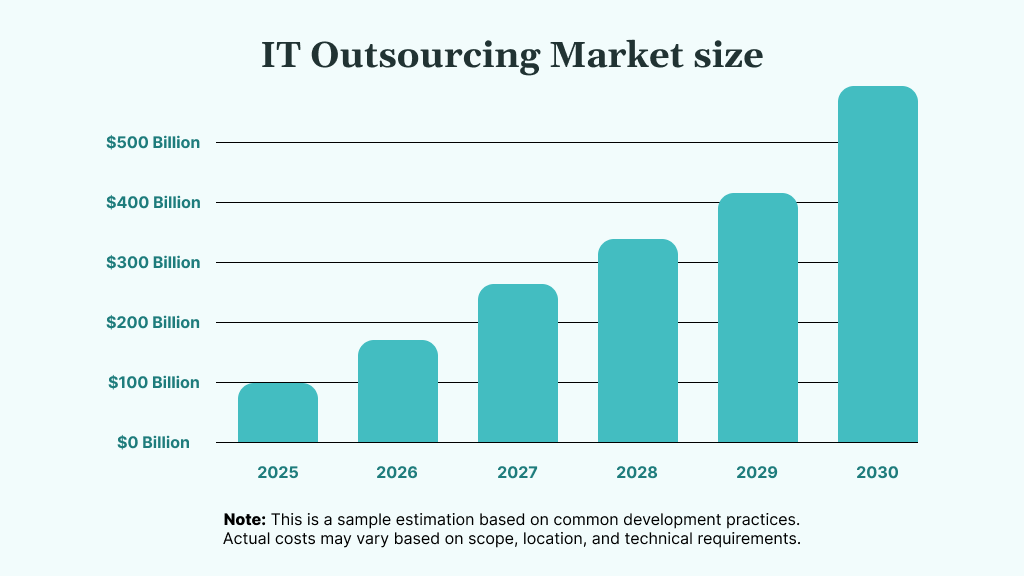
As the demand for scalable, expert-driven solutions continues to rise, the global software development outsourcing market is experiencing remarkable growth. With a projected market size of $83.26 trillion by 2030, this growth underscores the growing reliance on outsourcing to drive product development and meet the evolving needs of businesses.
Who Should Outsource Software Development and When?
Who Should Outsource:
- Startups and SMBs: Limited internal resources make outsourcing a cost-effective way to access high-level expertise and scale rapidly. It allows them to launch products quickly and compete with larger players without significant upfront investment.
- Medium-sized Enterprises: To gain a competitive advantage by accessing specialized skills and accelerating digital transformation without substantial in-house expansion.
- Enterprises: Even larger organizations outsource specialized or temporary projects to external experts, allowing them to focus on their core operations. This can include developing new features, migrating legacy systems, or handling peak workloads.
- Non-tech Companies:
- Healthcare Providers: To develop patient management systems, telehealth platforms, or data analytics tools that comply with strict regulations like HIPAA.
- Financial Institutions: For secure banking applications, FinTech solutions, fraud detection systems, and regulatory compliance software.
- Educational Institutions: To create e-learning platforms, student information systems, and administrative software.
- Government Agencies: For public service applications, data management systems, and cybersecurity solutions.
- Media & Entertainment: To build streaming platforms, content management systems, and interactive experiences.
- Real Estate: To develop sophisticated property management software, advanced CRM systems for agents, interactive virtual tour platforms, integrated listings maps, tools for comparing commissions across agencies, and solutions for automatic lien status management alongside robust data analytics for market trends and property valuation.
When to Outsource:
Outsourcing is ideal when you face:
- Talent shortages: Difficulty finding qualified local developers for specific technologies or roles.
- Budget constraints: Need to reduce development costs without compromising quality.
- Need for niche expertise: Projects requiring highly specialized skills not available in-house.
- Desire to scale quickly: To accelerate product launch or handle increased demand without the delays of traditional hiring.
- Focus on core business: To free up internal resources to concentrate on strategic initiatives.
- Short-term projects: When a project has a clear scope and timeline, making a dedicated internal team impractical.
- Access to innovation: To leverage external partners who are at the forefront of emerging technologies.
Step-by-Step Guide to Choosing the Right Outsourcing Model and Partner
1. Define Goals and Requirements
Before engaging with any potential partner, clearly articulate what you want to achieve. This foundational step sets the direction for your entire outsourcing journey.
- Project Objectives: What is the primary purpose of the software? Is it a new product, a feature enhancement, a system migration, or ongoing maintenance?
- Scope and Deliverables: Define the exact functionalities, features, and modules that need to be developed. Be as specific as possible to avoid scope creep later.
- Technical Specifications: Outline preferred programming languages, frameworks, databases, cloud platforms, and any existing infrastructure constraints.
- Performance Expectations: What are the non-functional requirements (e.g., scalability, security, speed, uptime)?
- Timeline: Establish realistic deadlines for different project phases and final delivery.
2. Finalize Budget
Establish a well-defined budget early on to guide the selection of a suitable outsourcing model and partner.
- Overall Project Budget: Determine the total financial resources available for the software development project, including development costs, testing, project management, and potential post-launch support.
- Cost vs. Value: Understand that while cost savings are a major driver, the cheapest option may not always provide the best value. Consider the long-term return on investment (ROI).
- Payment Model Preferences: Determine whether you prefer a fixed-price, time-and-materials, or hybrid model based on your project’s predictability and flexibility needs.
3. Choose the Right Outsourcing Model
The optimal outsourcing model aligns directly with your project’s scope, budget, and long-term goals. Common engagement styles include:
- Staff Augmentation: Extend your existing in-house team with experienced developers, designers, or QA engineers, on demand. This model is ideal for filling specific skill gaps, increasing capacity for particular projects, and maintaining direct control over the development process. You gain specialized skills without the overhead of permanent hiring.
- Dedicated Development Teams: A full, self-contained team working exclusively on your project, managed collaboratively, and fully aligned with your vision and roadmap. This provides a virtual extension of your company, offering high levels of commitment, deep understanding of your business goals, and a stable, integrated unit for ongoing product development.
- End-to-End Product Development: Have an idea? This model enables the outsourcing partner to take the project from concept to deployment and beyond, handling every stage, including design, development, testing, launch, and ongoing maintenance. This is suitable for businesses that prefer to outsource the entire software development lifecycle, from ideation to continuous support, acting as a true strategic partner.
- Project-Based Outsourcing: Best for well-defined projects with specific timelines, fixed budgets, and clear deliverables. This model is suitable when the requirements are stable and unlikely to change significantly, reducing your direct management overhead as you pay for the completed project.
- Managed Services: For businesses looking to outsource specific IT functions or ongoing support and maintenance (e.g., cloud infrastructure management, cybersecurity monitoring, application maintenance). This model offloads the responsibility of managing an entire IT service or infrastructure, allowing you to focus on core business operations with guaranteed service levels.
- Scalable Resourcing: While not a distinct model in itself, many of the above models inherently offer the flexibility to easily scale resources up or down based on your project’s timeline, budget, or new business needs. This characteristic minimizes the risk and delays associated with traditional hiring, allowing for quick adaptation to changing market demands.
4. Resaerch and Shortlist Qualified Partners
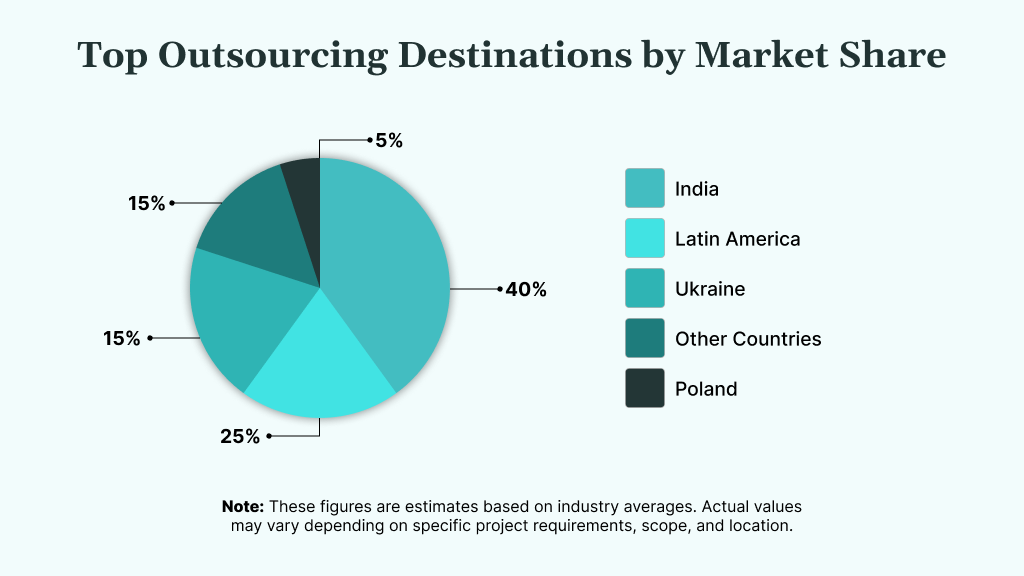
Once you know what you need, it is time to identify potential partners.
- Expertise and Track Record: Ensure the partner has demonstrable experience in your industry (e.g., HealthTech, FinTech, SaaS, AI/ML) and project type (e.g., mobile app development, enterprise software, data analytics). Look for specific case studies, portfolio examples, and evidence of proficiency in the required technical stack (e.g., Python, Java, React, .NET, specific cloud platforms such as AWS, Azure, and GCP).
- Client Testimonials and Case Studies: Look for proven success stories and independent reviews on reputable platforms, such as Clutch, GoodFirms, G2, or their website. Contact previous clients for references if possible.
- Cultural Compatibility: Evaluate cultural compatibility by assessing communication styles, values, and work ethics during initial interactions to foster understanding and effective collaboration.
- Technical Stack Alignment: Ensure their technical expertise aligns with your project’s technology requirements (e.g., Python, Java, React, cloud platforms).
- Security and Compliance: Verify their adherence to relevant industry security standards (e.g., ISO 27001, SOC 2) and regulatory compliance (e.g., GDPR, HIPAA, CCPA, PCI DSS for FinTech). This is crucial for protecting sensitive data.
- Development Methodologies: Inquire about their preferred methodologies (e.g., Agile, Scrum, Waterfall) and how they adapt to client needs.
- Pricing Structure Transparency: Ensure their pricing model is clear, transparent, and aligns with your budget and chosen engagement model.
5. Assess Communication and Cultural Compatibility
Evaluate communication practices and cultural fit to ensure smooth collaboration and mutual understanding across different locations.
- Regular Meetings and Transparent Communication Channels: Establish a clear communication plan, including frequency and preferred tools (e.g., video conferencing for stand-ups and reviews, instant messaging for quick queries, project management platforms like Jira or Asana for task tracking).
- Time Zone Overlaps for Real-time Collaboration: Identify sufficient overlap for critical discussions, brainstorming sessions, and immediate problem-solving. This might require flexibility from both sides.
- Cultural Understanding to Align Working Styles and Expectations: Foster an environment of mutual respect and understanding to bridge cultural differences and ensure smooth collaboration. This includes acknowledging holidays, understanding work norms, and being open to different communication nuances. Conduct initial calls to gauge rapport and communication clarity.
6. Prioritize Outcome -Based Contracts:
Shift the focus from hourly rates to tangible results, ensuring both parties are invested in the project’s success.
- Clear KPIs and Milestones: These define what success looks like at each stage of the project and ensure measurable progress. Examples include user adoption rates, system performance metrics, specific feature completion percentages, or bug fix rates.
- Transparent Reporting: Regular updates, detailed progress reports, and review meetings help track progress against agreed-upon KPIs and milestones. Implement a reporting schedule that suits your needs (e.g., weekly, bi-weekly).
- Flexible Payment Structure: Based on deliverables rather than just hours worked, ensuring that both parties are invested in the project’s success. This could include phased payments tied to milestone completion, performance bonuses for early delivery, or penalties for significant delays.
7. Integrate Technology and Security Standards
Given the sensitive nature of data, especially in regulated industries like HealthTech and FinTech, robust technology infrastructure and security protocols are non-negotiable.
- Data Protection: Ensure strict compliance with international and local regulations like GDPR, HIPAA, CCPA, and industry-specific certifications. Understand their data handling policies, encryption methods, and privacy safeguards.
- Encryption and Security Protocols: Implement end-to-end encryption for data in transit and at rest, multi-factor authentication for access, regular security audits, penetration testing, and vulnerability assessments to safeguard intellectual property and sensitive data.
- Scalability: Demand that systems and architectures are designed to scale seamlessly as business needs grow, accommodating increased user loads, data volumes, and new functionalities without significant re-architecture.
- Disaster Recovery and Business Continuity: Establish clear plans for data backup, rapid recovery protocols, and business continuity strategies to minimize downtime and ensure continuous operations in case of unforeseen events.
- Intellectual Property (IP) Protection: Ensure robust legal agreements are in place to protect your IP.
8. Plan for Quality Assurance and Risk Management
Proactive QA and risk management are vital for delivering high-quality software and minimizing project disruptions.
- Comprehensive Code Reviews and Testing: Implement continuous code audits, static code analysis, and a thorough testing strategy encompassing unit testing, integration testing, system testing, performance testing, security testing, and user acceptance testing (UAT) to prevent bugs and ensure code quality.
- Risk Mitigation Strategies: Identify potential risks early in the project lifecycle (e.g., technical challenges, scope creep, resource unavailability, third-party dependencies) and put in place proactive strategies to minimize their impact. Develop contingency plans for each identified risk.
- Regular Performance Monitoring: Implement continuous monitoring of system metrics, security issues, and user feedback after launch to maintain software stability and proactively address potential problems.
9. Facilitate Seamless Collaboration
Effective collaboration tools and practices are the backbone of a successful outsourced partnership.
- Collaboration Tools: Leverage industry-standard project management tools (e.g., Jira, Asana, Trello), communication platforms (e.g., Slack, Microsoft Teams, Zoom), and code repositories (e.g., GitHub, GitLab, Bitbucket) to keep teams organized, communicate effectively, manage tasks, and track progress.
- Regular Updates: Maintain alignment with client goals and transparency through consistent check-ins, virtual daily stand-ups, bi-weekly sprint reviews, and detailed progress reports.
- Transparency: Demand complete visibility into the development process, including access to code repositories, project boards, bug tracking systems, and comprehensive documentation. This fosters trust and makes it easy to track progress and provide timely feedback.
10. Monitor Performance and Continuously Optimize
Performance monitoring is crucial to ensure that outsourced software development remains on track and delivers ongoing value.
- Monitor Key Performance Indicators (KPIs) and Milestones: Monitor KPIs and milestones continuously, and implement optimization strategies based on performance data to enhance scalability, functionality, efficiency, and reduce technical debt.
- Collect Client Feedback: Actively solicit and incorporate client feedback (e.g., through surveys, direct conversations, regular review meetings) to continuously improve the product, processes, and service delivery.
11. Scale and Innovate for Long-Term Success
Outsourcing is often a strategic long-term partnership that fosters continuous growth and innovation.
- Scale Software Products: Ensure the chosen partner can help you scale your software products as your business grows, accommodating increased user loads, data volumes, and expanding functionalities without compromising performance or stability.
- Incorporate New Technologies: Leverage the partner’s expertise to incorporate new technologies like AI/ML, blockchain, IoT, or advanced analytics to drive innovation, create competitive advantages, and enhance user experiences.
- Maintain Ongoing Support and Updates: Establish clear terms for continuous maintenance, bug fixes, security patches, performance optimizations, and feature enhancements to keep the software relevant, secure, and high-performing in a dynamic market. This demonstrates a commitment to a long-term partnership.
Common Challenges & How to Overcome Them
- Misaligned Expectations: Set clear goals, KPIs, and deliverables upfront. Create a detailed Statement of Work (SOW) and a robust communication plan that includes regular check-ins and feedback loops.
- Communication Barriers: Leverage tools that enable asynchronous and synchronous communication to overcome time zone differences. Establish a “communication matrix” outlining preferred methods, frequency, and responsible parties. Encourage cultural sensitivity training.
- Quality Control: Implement rigorous and continuous testing (unit, integration, system, user acceptance testing) and feedback loops. Conduct regular code reviews and define clear quality standards in the contract.
- Time Zone Differences: Schedule core collaboration times that overlap between teams. Utilize asynchronous communication methods for less time-sensitive updates.
- Lack of Ownership/Accountability: Define clear roles, responsibilities, and accountability metrics in the contract. Implement performance-based incentives for the outsourcing partner.
- Security and IP Concerns: Sign comprehensive Non-Disclosure Agreements (NDAs) and intellectual property (IP) agreements. Ensure the outsourcing partner adheres to international security standards (e.g., ISO 27001) and data privacy regulations. Implement strict access controls and conduct regular security audits.
Best Practices for Successful Outsourcing
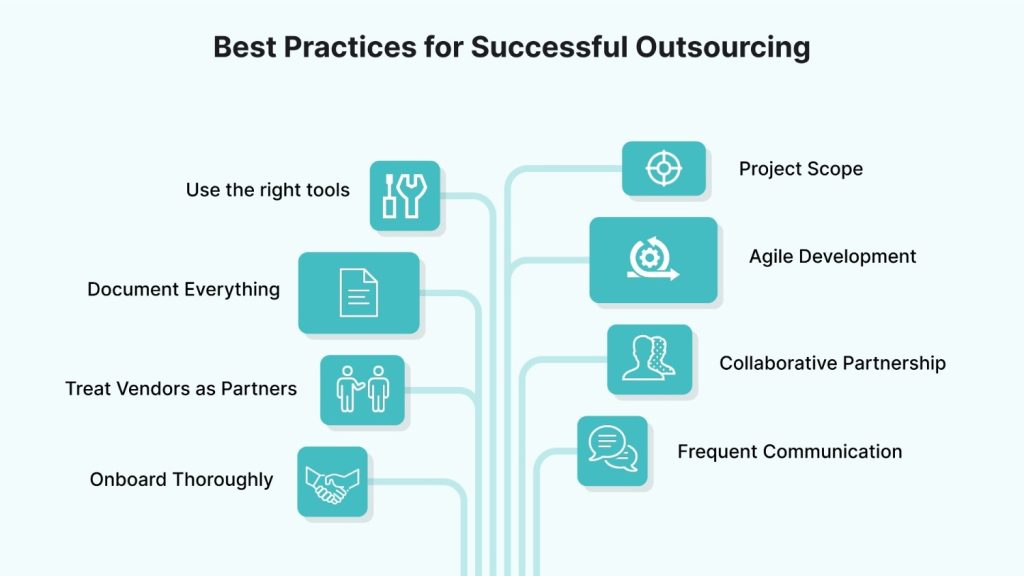
- Define project requirements and goals clearly from the start: A detailed and unambiguous project scope document is essential.
- Maintain an agile development process with frequent updates and checkpoints: This allows for flexibility, early detection of issues, and continuous alignment.
- Foster a long-term, collaborative relationship with your outsourcing partner: View them as an extension of your team, not just a vendor.
- Stay in touch frequently: Weekly video calls, daily stand-ups (even if brief), and regular progress reports help align expectations and address issues promptly.
- Use the right tools: including project management platforms like Jira, Asana, and Trello, communication tools such as Slack and Microsoft Teams, and code repositories like GitHub and GitLab, to enhance transparency and operational efficiency.
- Document Everything: Maintain thorough documentation of the scope, deadlines, features, technical specifications, and all change requests. This minimizes misunderstandings and provides a clear audit trail, ensuring transparency and accountability.
- Treat Vendors as Partners: Build trust by sharing your long-term goals, providing constructive feedback, and recognizing their contributions.
- Onboard Thoroughly: Provide comprehensive onboarding that includes explaining your product, target user personas, market landscape, business objectives, and company culture.
Where to Outsource in 2025: Best Countries and Talent Markets
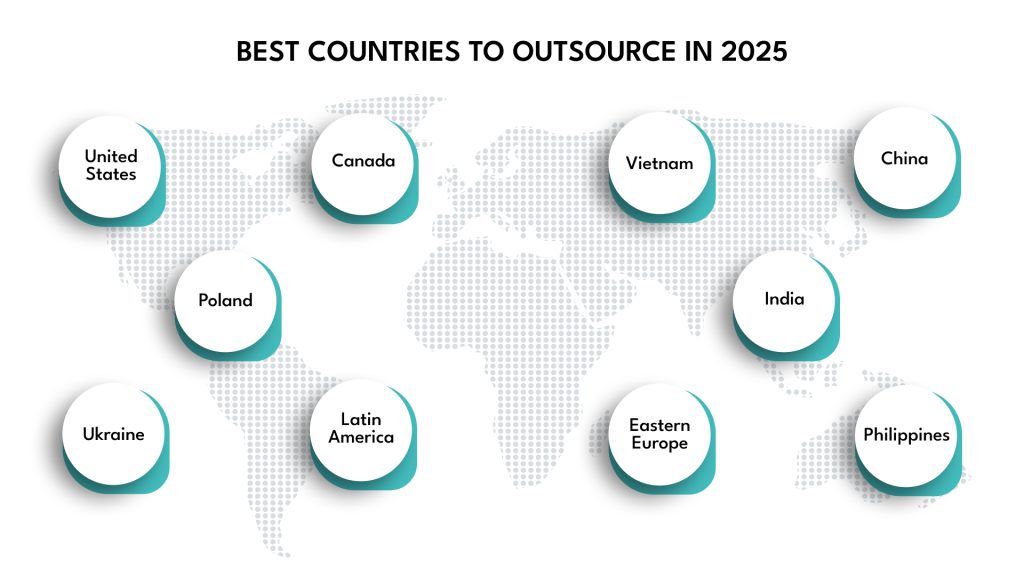
Top outsourcing destinations in 2025 continue to offer diverse advantages:
- United States/Canada (Nearshoring/Onshoring): For projects that require extreme cultural alignment, minimal time zone differences, or highly sensitive data, North American nearshoring or onshoring provides benefits despite higher costs.
- India: With its vast pool of skilled developers, competitive cost advantages, and strong English proficiency, India remains a leader in outsourcing, particularly in HealthTech, FinTech, and AI/ML solutions. It offers a mature outsourcing ecosystem.
- Ukraine: Known for its robust tech talent, strong engineering universities, and affordable rates, Ukraine excels in R&D and complex software development.
- Poland: Offering high-quality software engineering, strong technical education, and cultural proximity, Poland is especially appealing to EU-based companies.
- Philippines: A popular destination for English-speaking development teams, the Philippines is strong in BPO and increasingly in software development, particularly for web and mobile.
- Vietnam: Emerging as a strong competitor with a rapidly growing tech sector, cost-effective talent, and government support for IT.
- Latin America (e.g., Brazil, Argentina, Colombia, Mexico): Offering significant time zone overlap with North America, a growing tech talent pool, and cultural affinity, Latin America is ideal for real-time collaboration.
- Eastern Europe (e.g., the Czech Republic, Romania, Croatia): Known for highly skilled developers, strong IT infrastructure, and proximity to Western European markets.
- China: While primarily focused on its domestic market, China offers a massive pool of technical talent, particularly in AI, big data, and mobile development, for those comfortable with its regulatory environment.
Conclusion
By choosing the right partner, companies can overcome challenges, streamline their development processes, and deliver high-quality software solutions. Whether you need help with HealthTech, FinTech, or AI/ML projects, outsourcing is a strategic tool that drives growth, cost-efficiency, and long-term success. With expertise in building scalable and secure software, businesses like DEVtrust can help you confidently navigate the digital landscape and meet the demands of a rapidly evolving market.
Ready to innovate and dominate your market? Connect with DEVtrust today! We specialize in delivering scalable, expert-driven software solutions that propel businesses like yours forward, whether you are in real estate, logistics, healthcare, edtech, fintech, or another dynamic industry. Let’s discuss how we can partner to ensure your success in 2025 and beyond.
Complete Guide to Outsourcing Software Development in 2025
Boost your business in 2025 by outsourcing software development. Define goals, choose models, research partners, prioritize contracts. Click now!
Contact Us